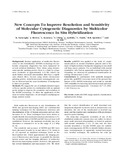Mostrar el registro sencillo del ítem
New concepts to improve resolution and sensitivity of molecular cytogenetic diagnostics by multicolor fluorescense in situ hybridization
| dc.creator | Saracoglu, K. | |
| dc.creator | Brown, J. | |
| dc.creator | Kearney, L. | |
| dc.creator | Uhrig, S. | |
| dc.creator | Azofeifa Navas, Jorge | |
| dc.creator | Fauth, Christine | |
| dc.creator | Speicher, Michael R. | |
| dc.creator | Eils, R. | |
| dc.date.accessioned | 2015-04-17T16:33:45Z | |
| dc.date.available | 2015-04-17T16:33:45Z | |
| dc.date.issued | 2001 | |
| dc.identifier.citation | http://onlinelibrary.wiley.com/doi/10.1002/1097-0320%2820010501%2944:1%3C7::AID-CYTO1076%3E3.0.CO;2-G/abstract;jsessionid=28EB91BDD05114F7210BFF2D03E3A768.f03t03 | |
| dc.identifier.issn | ESSN: 1552-4930 | |
| dc.identifier.uri | https://hdl.handle.net/10669/11388 | |
| dc.description | Artículo científico -- Universidad de Costa Rica, Instituto de Investigaciones en Salud, 2001. Este documento es privado debido a limitaciones de derechos de autor. | es_ES |
| dc.description.abstract | Background: Routine application of multicolor fluorescence in situ hybridization (M-FISH) technology for molecular cytogenetic diagnostics has been hampered by several technical limitations. First, when using chromosome-specific painting probes, there is a limit in cytogenetic resolution of approximately 2–3 Mb, which can mask hidden structural abnormalities that have a significant clinical effect. Second, using whole chromosome painting probes, intrachromosomal rearrangements cannot be detected and the exact localization of breakpoints is often not possible. Methods: We suggest the use of multiplex-labeled region or locus- specific probes in combination with an optimal probe design to improve the sensitivity and resolution of the M-FISH technology. To allow the application of this assay in routine diagnostics, we developed a multipurpose image analysis system. Results: goldFISH was applied to the study of cryptic translocations in mental retardation patients and to the study of high-resolution breakpoint mapping in non-small cell lung cancer patients. For an individual with mental retardation, who had an apparently normal karyotype by G-banding, we detected an unbalanced translocation involving chromosomes 2 and 7. Conclusions: In combination with optimally designed probe kits, goldFISH overcomes most of the present limitations of the M-FISH technology and results in virtually 100% reliability for detecting interchromosomal and intra-chromosomal rearrangements. | es_ES |
| dc.description.sponsorship | info:eu-repo/grantAgreement/Universidad de Costa Rica/Instituto de Investigaciones en Salud//// | es_ES |
| dc.language.iso | en_US | es_ES |
| dc.source | Cytometry 44(1): 7-015 | es_ES |
| dc.subject | multicolor-FISH | es_ES |
| dc.subject | classification | es_ES |
| dc.subject | optimal probe design | es_ES |
| dc.subject | image analysis | es_ES |
| dc.subject | Genetics | es_ES |
| dc.subject | Genética | es_ES |
| dc.title | New concepts to improve resolution and sensitivity of molecular cytogenetic diagnostics by multicolor fluorescense in situ hybridization | es_ES |
| dc.type | artículo original | |
| dc.identifier.doi | DOI:10.1002/1097-0320(20010501)44:1<7::AID-CYTO1076>3.0.CO;2-G | |
| dc.description.procedence | UCR::Vicerrectoría de Investigación::Unidades de Investigación::Ciencias de la Salud::Instituto de Investigaciones en Salud (INISA) | es_ES |


